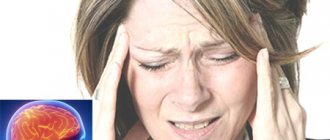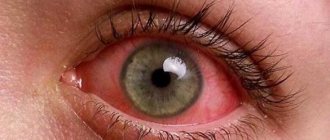Dysplasia is a disorder of the development of organs and/or tissues in the embryonic and postnatal period. Hip dysplasia (HJD) is a congenital defect based on the underdevelopment of all joint elements. In this condition, not only insufficient development of the joint may be observed, but also its increased mobility in combination with a connective tissue defect.
With delayed diagnosis and late initiation of treatment or its absence, joint dysplasia can lead to impaired function of the lower extremities and even disability. In this regard, this pathology must be identified and treated as early as possible in order to correct the defect and get rid of problems with defective joints in the future.
Dysplasia is translated from Greek as disorder, distortion (dys) + form, formation (plasis, plasio). The severity of joint underdevelopment can vary significantly and ranges from gross structural disorders to joint hypermobility due to weakness of the ligamentous apparatus.
Hip dysplasia in infants can lead to hip subluxation and dislocation. At an older age, children develop curvature of the spine and early osteochondrosis. Often the symmetrical joint also suffers if it was previously healthy.
Anatomical certificate
The hip joint is a movable joint between two bones: the head of the femur and the acetabulum. Thanks to the concave and round shape of the acetabulum, movements in the joint are carried out in three planes: frontal, sagittal and vertical. That is, the leg at the hip joint can bend and extend, adduct and abduct, and also rotate in different directions.
The hip joint (HJ) is formed by the largest bones of the human skeleton and withstands high loads every day. In this it is helped by a strong synovial capsule and a powerful ligamentous apparatus.
The formation of hip joint structures occurs at the stage of embryonic development of the fetus, at approximately 6 weeks of pregnancy. Already by the eighth week, the embryo exhibits joint mobility. It is the intrauterine period and the first year of a baby’s life that is of decisive importance for the proper development of the hip joint.
The hip joint in newborns, even normally, is characterized by insufficient stability. The end parts of the pelvic bone, which form the acetabulum, after the birth of a child partly consist of cartilage, and at the site of their articulation with the femur, a cartilaginous bridge is formed - the so-called “Y-shaped plate”. The articular surface and part of the neck of the femur also retain a cartilaginous structure.
The articular cavity in infants is oval and shallow, so the femur is only 1/3 immersed in it, while in adults this figure is at least 2/3. Moreover, the angle of inclination of the acetabulum is approximately 60°. For comparison: in adults it is 40°.
Thus, the femoral head is held in an almost flat socket only by the tension of the synovial capsule and ligaments. Upward displacement is prevented by a Y-shaped plate (limbus) that runs along the edge of the acetabulum. Instability in the joint is also caused by insufficiently strong ligamentous apparatus, which is typical for all newborn children.
Normally, in children under one year of age, the joint gradually stabilizes. The angle of inclination of the glenoid cavity becomes smaller, the femoral head is better centered, and the cartilaginous structure of the neck is transformed into full-fledged bone. Over the course of several months of life, the ligamentous system and hip joint capsule are also strengthened.
Diagnosis confirmation
So, the most common symptoms that may indicate in favor of THA are: asymmetrical skin folds on the front and back of the hips, limited passive abduction of the hips of varying degrees, and the presence of a clicking symptom in the joint. Asymmetrical folds and limited hip abduction occur very often in children without dysplasia, which once again shows how important it is to show the child to a specialist to make the correct diagnosis.
It is important to evaluate the symmetry of pathological manifestations on both sides, because the problem can be on one or both sides. Moreover, with a bilateral process, the degree of changes in each joint may be different.
If pathological changes in the hip joints are suspected, the baby is referred to a pediatric neurologist and orthopedist, who conduct a more detailed examination of the child and identify other pathological symptoms of dysplasia, if any. It is very important to distinguish between whether the child has neurological problems (for example, a consequence of a difficult birth) or completely orthopedic ones.
To correctly diagnose a child, additional studies of the hip joint are required.
- X-ray examination. It is carried out to clarify the details of the structure of the joint and the relationship of its components. The optimal time for radiography is from the age of 2.5-3 months. This study is carried out not only at the diagnostic stage, but also during the child’s treatment, as well as after its completion, in order to assess the dynamics of changes. An orthopedic surgeon interprets the obtained images.
- Ultrasound examination of joints (ultrasound). A common safe method for diagnosing hip joint pathology. Allows you to assess the condition of joint structures (muscular apparatus, tendons, ligaments, cartilage) and their maturity. It is optimal to conduct this study in the first three months of life.
In addition to dysplasia, there are other diseases of the hip joint, the manifestations of which are sometimes very similar to each other. Only an orthopedic doctor can understand the problem.
The mechanism of pathology development
Under the influence of various factors, the development process of all elements of the joint is disrupted: the articular cavity is significantly flattened, the process of ossification of cartilaginous areas slows down. As a result, the size of the femoral head is distorted: it either increases or decreases.
An underdeveloped joint differs from a healthy one in having a flatter acetabulum and an irregular shape or size of the femoral head.
Violation of the process of ossification (or ossification) leads to the fact that the articular surfaces no longer correspond to each other. The epiphysis of the femur bone is deformed, and its neck is shortened and deviated from its normal position.
The limbus and capsule change pathologically: the Y-shaped cartilaginous plate is deformed, the synovial capsule is stretched. The proper ligament of the femur can either become excessively enlarged (hypertrophy) or become very small and even disappear (aplasia). At the same time, dystrophic changes also occur in the muscles.
Degrees and types
Hip dysplasia in children can have varying degrees of severity, and therefore there is a corresponding classification:
Clubfoot in children
- 0 degree – immaturity of the hip joint. It can be observed in healthy children and represents a borderline state between normal and pathological. Occurs mainly in premature babies. There are no external signs of dysplasia, but ultrasound shows slight deviations: for example, an increase in the angle of inclination or insufficient depth of the acetabulum;
- 1st degree – pre-dislocation. The synovial capsule is stretched, the femoral head is somewhat displaced, but easily “falls” into place. Pre-dislocations are more often observed in newborns and adults with unilateral dislocation of the hip joint on a symmetrical joint;
- 2nd degree – subluxation of the hip joint. The articular surface of the femur is shifted, but part of it remains within the acetabulum. The femoral head pinches and displaces the acetabular cartilaginous labrum upward, the femoral ligament stretches and becomes tense;
- 3rd degree – dislocation. The head of the femur extends completely beyond the glenoid cavity and is directed upward and anteriorly. The acetabular labrum is bent inside the joint and clamped by the femur. Both the capsule and the ligament are stretched and strained.
Today, doctors diagnose dysplasia even when the normal configuration of the hip joint is preserved, when the inferiority of the joint can only be seen on ultrasound.
There are three types of hip joint developmental disorders. With acetabular dysplasia, changes affect only the acetabulum - it is very flat and smaller in size compared to the age norm. The cartilaginous lip framing the articular cavity is underdeveloped.
Femoral dysplasia is characterized by a decrease or increase in the neck-shaft angle at the junction of the femoral neck and the diaphysis (center of the bone). With rotational dysplasia, the geometry of the bones in the horizontal plane is disrupted.
Recovery period
Even if the treatment was successful, a child diagnosed with hip dysplasia remains under the care of an orthopedic doctor for a long time - in some cases until growth stops completely. Experts recommend performing a control X-ray examination of the hip joints once every 2 years. The child is subject to restrictions on physical activity, and it is recommended to attend special orthopedic groups in preschool and school institutions.
Hip dysplasia is a rather complex disease; many parents literally panic when they hear such a verdict from doctors. But there is no reason to be hysterical - modern medicine copes well with the pathology, timely treatment and the patience of parents make the prognosis quite favorable.
Comprehensive information about the signs of hip dysplasia, methods of diagnosis and treatment of hip dysplasia in children - in the video review of the pediatrician, Dr. Komarovsky:
Tsygankova Yana Aleksandrovna, medical observer, therapist of the highest qualification category.
45, total, today
( 167 votes, average: 4.69 out of 5)
How to prepare your child for vaccination
Foot pain: causes, treatment
Related Posts
Causes
The first theories about the causes of dysplasia were put forward in the time of Hippocrates, but many of them did not stand the test of time and were refuted by scientists. Currently, 4 reasons have been scientifically substantiated, the main of which is genetic predisposition. Hip dysplasia is approximately 10 times more common in children whose parents suffered from the same pathology.
Experts believe that the environmental factor has a huge impact on the formation of tissues from which the joint later develops. In previous years, the incidence of dysplasia was much lower and amounted to no more than 3%. Now this figure has increased to 12%. Dysplasia in a child that arises due to poor environmental conditions is the most difficult to treat.
In third place in importance is hip dysplasia, associated with abnormalities in the development of the spinal cord (myelodysplasia). This pathology is manifested by pronounced clinical symptoms ranging from back pain and ending with dropsy of the brain. It is often combined with other defects of the musculoskeletal system, for example, with foot deformity or torticollis.
About 35% of cases of dysplasia in children are caused by hormonal factors. At the end of pregnancy, a woman produces a large amount of the hormone progesterone, which leads to weakening of the periarticular ligaments. Often, further progression of dysplasia does not occur, since the influence of maternal progesterone on the fetus disappears.
The likelihood of a violation of the structure of the hip joint increases with breech presentation of the fetus, oligohydramnios, increased uterine tone and large size of the child. Under such conditions, the mobility of the fetal hip joints is limited, and the left joint is most often damaged, since it is the one that is pressed against the inner wall of the uterus.
Reference: female infants are more susceptible to dysplasia, as they are more susceptible to the action of the hormone progesterone.
Underdevelopment of the hip joint in newborns is more common in the spring and winter, which is associated with a seasonal deficiency of vitamins and minerals.
Causes of joint pathology in children
Why some babies have immature hip joints at the time of birth remains a mystery. Scientists are still looking for an answer to this question, but there are some theories.
Some researchers believe that hormonal imbalances during pregnancy - excessive release of estrogen - are to blame. Others “blame” the thyroid gland and iodine deficiency, which leads to tissue deficiency. There is a theory about primary insufficiency of elements of the musculoskeletal system (ligaments, cartilage, muscles, nerves) and other theories. In short, there are many theories, and scientists have rich “soil” for continuing research in this area.
Signs of hip dysplasia
There are 5 main symptoms of hip dysplasia, the most important of which is the Marx Ortolani sign, or clicking symptom. It is observed in almost all children with dysplasia, but tends to disappear within a week or 10 days after the birth of the child.
To identify the clicking symptom, you need to put the child on his back and bend his legs at the hip and knee joints to a right angle. Then the doctor clasps the legs above the knee with his fingers and spreads them apart, while lightly pressing on the protruding parts of the thighs at the location of the greater trochanter.
To identify dysplasia, the child is examined by a pediatric orthopedist; a visit to this doctor in the first months of the baby’s life is mandatory.
Normally, the child’s legs are spread as far apart as possible, and the knees are on the surface of the couch. With dysplasia, at some point a click will be heard or felt, which is accompanied by the femoral head entering the acetabulum. At the same time, the knees will remain above the couch, and when the legs are brought together, the click will be repeated - the head of the femur will again leave the socket, and dislocation will occur.
Insufficient abduction of the hips to the sides indicates a discrepancy between the articular surfaces of the bones and muscle weakness. This symptom, like the clicking symptom, clearly indicates dysplasia. However, in cases of mild severity, it is not always detected. In addition, abduction of the hips to an angle of less than 85° occurs in other pathologies, for example, with varus deformity of the femoral neck or congenital neurological defects.
Reference: the symptom of insufficient hip abduction is positive only in the first week of a baby’s life, after which it disappears and appears again in the third month.
The asymmetry of the folds on the skin is checked with the baby lying on his back and on his stomach. When the baby lies on his back with his legs straight, three folds are clearly visible on the inner thighs. Otherwise, there will be more folds on the affected side, and they will be located higher.
When the child is lying on his stomach, pay attention to the gluteal folds: in the area of the underdeveloped joint, the fold is higher.
It should be noted that asymmetry can be a significant criterion only in the presence of other typical signs, since unevenly located folds are often observed in healthy children.
If one leg is clearly shorter than the other, then this is a very reliable sign of dysplasia, and its severe degree. Different limb lengths are noticeable when the baby lies on his stomach with his legs straight or bent. The knees are located at different levels.
Shortening of the limb in newborns is observed only with high dislocation and upward displacement of the femoral head. This criterion is most important when examining children after one year.
When the hip is dislocated, external rotation may occur, which is especially noticeable when the child is sleeping. This symptom is the least important in determining dysplasia and is sometimes found in healthy children.
Treatment
The main condition for successful treatment is its early start. Correction of dysplasia is carried out using orthopedic structures, therapeutic massage, special gymnastics and physiotherapy.
No adult, much less a child, can hold their legs in a position of adduction and flexion for a long time. But with dysplasia, this position is most beneficial and ensures the correct development of the hip joint.
When treating young children, it is sufficient to use soft bandages that do not interfere with leg movements. The most effective device is Pavlik stirrups, made of soft fabric. This design is a single system of elastic belts and straps that secures the child’s legs apart and bent at the knees and hip joints. The therapeutic effect of Pavlik stirrups is to prevent straightening of the legs in the hip joint and bringing them to the center. At the same time, free rotation of the hips remains in the safe zone.
There are many devices for fixing the hips; the selection of the most suitable one is carried out by a doctor and depends on the age of the child and the degree of dysplasia. There is no universal option that is guaranteed to correct the defect. Each device has both advantages and disadvantages.
An important role in restoring range of motion and stabilizing the joint is played by therapeutic exercises to strengthen the muscle corset. They are especially effective in combination with massage sessions, during which the muscles of the buttocks are massaged.
In order to strengthen and properly further form the joint, physiotherapy is prescribed. The most effective are electrophoresis with calcium and phosphorus or iodine, compresses with ozokerite, ultraviolet irradiation and fresh baths.
Consequences
In the absence of an appropriate approach to treatment, the likelihood of complications occurring is high. Children suffering from hip dysplasia begin to walk much later than their peers. Their gait is shaky and unstable, which becomes especially noticeable at the age of 1.5 years.
When both joints are affected, the child waddles, literally “waddling” from one leg to the other. Dysplasia can also provoke the development of flat feet, clubfoot and lameness. If a child begins to limp, he shifts the center of gravity of the body to the healthy side. This, in turn, leads to a gradual curvature of the spine.
Posture worsens, lateral and anteroposterior curvatures of the spinal column occur: scoliosis, kyphosis, hyperlordosis. The occurrence of early osteochondrosis, which affects the intervertebral discs and ligaments of the back, as well as the appearance of dysplasia in a symmetrical, healthy joint, cannot be ruled out.
It is worth noting that in 2–3% of cases, even after treatment, problems with articulation arise, since modern methods of treating dysplasia are imperfect. There is almost always a certain probability of relapse and negative consequences.
Diagnostics
As part of the screening (from the third to the tenth day of life), each child should be examined for joint dysplasia. To safely diagnose DTS, it is necessary to conduct an ultrasound examination. This is usually done soon after birth, but in any case at 12-16 weeks. X-ray diagnostics (synonym: radiograph, radiography) is usually not required. X-rays (x-ray examination) are not more informative diagnostic methods than ultrasound.
Ultrasound examination
Important! A doctor will help you correctly determine the diagnosis of an infant, a teenager (adolescent) or an adult patient. It is not recommended to engage in self-diagnosis based on symptoms (nonspecific manifestations) and try to cure the disorder with physical therapy (physical therapy) or gymnastics.
From the 1st year of life, the joint may be better represented on x-ray due to increased ossification. Arthrography becomes necessary when the hip cannot be restrained in an infant. A contrast agent is then injected into the joint and X-rays are taken from multiple angles.
A typical sign of DTS is the Trendelenburg sign. This is noticeable when it comes to one leg on the affected side. The leg on the affected side appears shorter than the other, and the buttock folds appear uneven. Failure to detect TTS in a timely manner can result in acetabular injury or severe dislocation.











